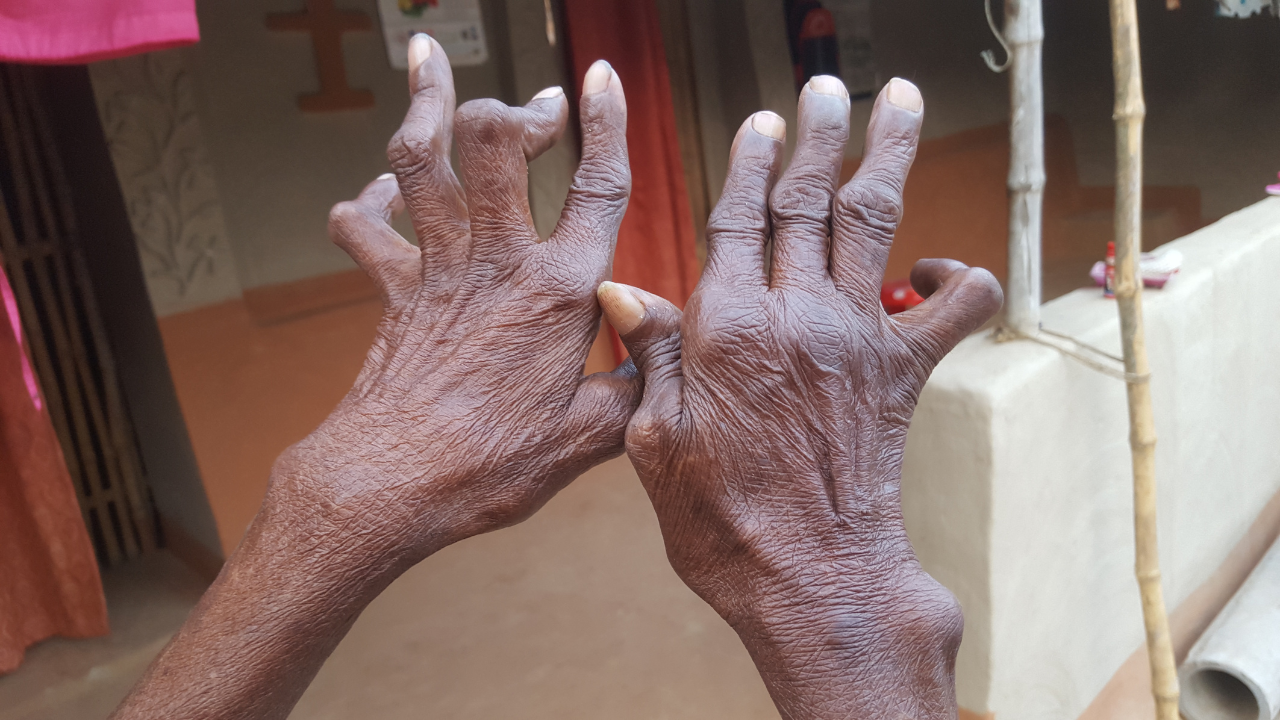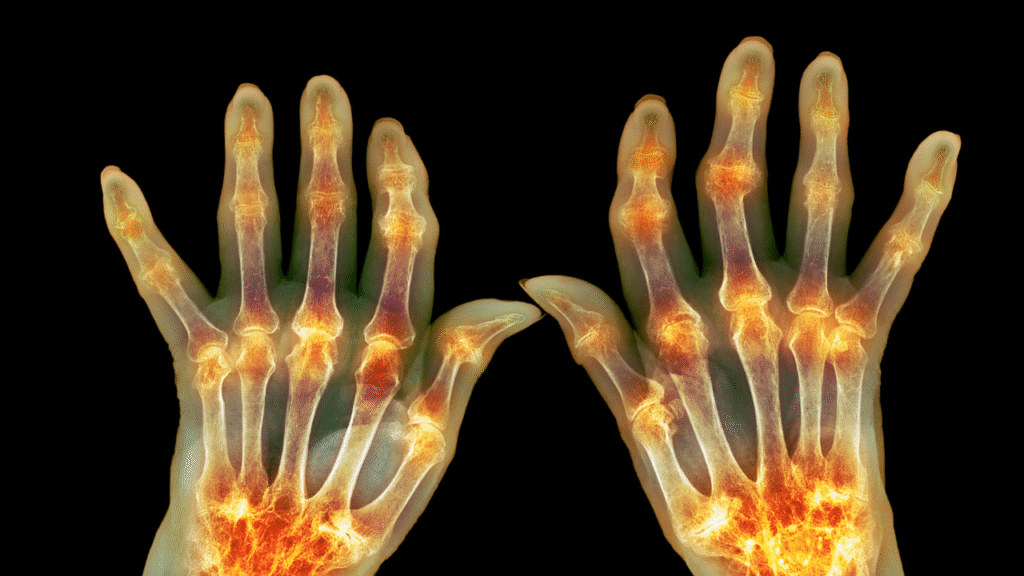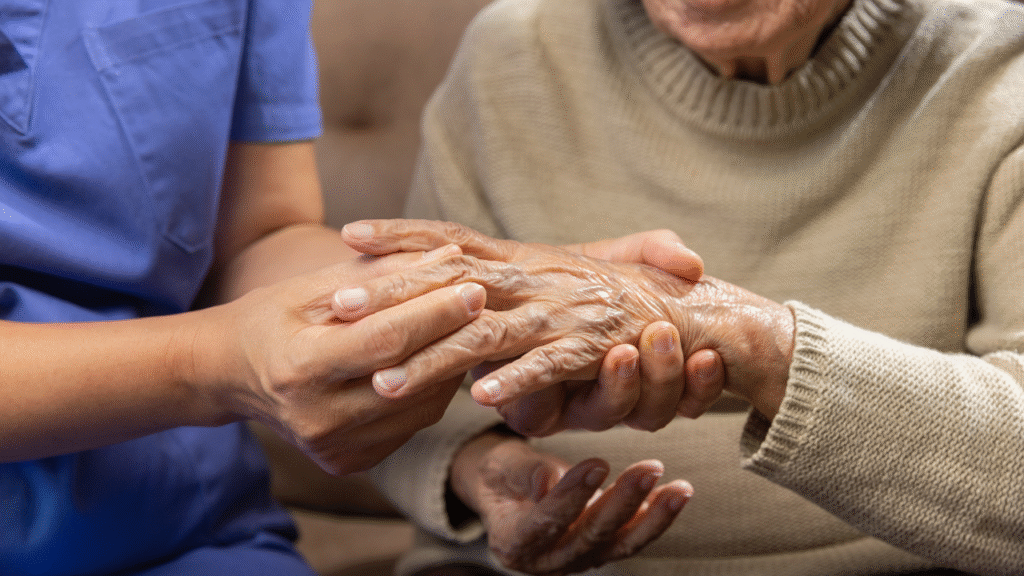Rheumatoid arthritis (RA) is a chronic, ongoing condition that causes pain, swelling, and inflammation in the joints. But its impact often goes beyond the joints. RA is a systemic autoimmune disease, meaning it can also damage other parts of the body, including the skin, eyes, lungs, heart, and blood vessels.
In rheumatoid arthritis, the immune system mistakenly attacks the body’s tissues, particularly the lining of the joints. This autoimmune reaction leads to inflammation that wears away at the joint lining and the bone beneath it. Over time, this can result in joint deformity, pain, and loss of function.
RA is different from the more common osteoarthritis (OA). While OA is caused by wear and tear from overuse and aging, RA attacks the joints from the inside, leading to more widespread damage and systemic symptoms. Some individuals may experience both conditions simultaneously.
Thanks to advances in medical research, new treatment options have greatly improved outcomes for many people with RA. However, if left untreated or poorly managed, rheumatoid arthritis can cause permanent joint damage and significantly increase the risk of heart disease and other complications.
What Causes Rheumatoid Arthritis?
The exact cause of rheumatoid arthritis (RA) is still unknown. It’s considered an autoimmune disorder, where the body’s immune system mistakenly attacks its own healthy tissues, especially the joints.
While researchers have long suspected that viruses, bacteria, or fungi might be the trigger, no infectious agent has been definitively identified as the cause. As a result, the origin of this immune system malfunction remains one of the most actively studied areas in medical research.
Does Rheumatoid Arthritis Run in Families?
Yes, there is evidence that RA can be hereditary. Here’s what we know:
- Some people may inherit genes that increase their susceptibility to RA.
- Certain genetic markers—especially those related to immune system function—have been linked to a higher risk of developing RA.
- However, having a genetic predisposition does not guarantee that someone will develop RA.
- It’s likely that environmental factors, such as infections or toxins, trigger the disease in people who are already genetically vulnerable.
Top 5 Risk Factors for Rheumatoid Arthritis
- Sex
- RA is significantly more common in women than in men.
- Among individuals under 50, the condition is 4 to 5 times more common in women.
- After age 60, the gender gap narrows slightly.
- Age
- RA typically begins in middle age, but it can occur at any age.
- In younger individuals, it may present as juvenile rheumatoid arthritis, affecting those under the age of 16.
- Family History
- Having a first-degree relative with RA increases your risk.
- Family history is a significant indicator, especially when combined with other risk factors.
- Obesity
- Being overweight, particularly in women under 55, increases the likelihood of developing RA.
- Obesity may contribute to both the onset and severity of symptoms.
- Smoking and Environmental Exposure
- Smoking is one of the most strongly linked environmental risk factors for RA.
- Exposure to asbestos or silica dust also raises the risk.
- These factors may trigger the immune system in genetically susceptible individuals.
Symptoms of Rheumatoid Arthritis (RA)
Diagnosing rheumatoid arthritis (RA) begins with recognizing the early symptoms, which help doctors distinguish it from other types of arthritis, like osteoarthritis. RA has a distinct symptom pattern, particularly in its early stages.
Key Early Symptoms of RA
Doctors typically look for the following signs, especially if they persist for more than six weeks:
- Joint pain, stiffness, and swelling lasting longer than 6 weeks
- Swelling in multiple joints, especially three or more at once
- Morning stiffness that lasts more than 30 minutes
- Symmetrical symptoms, meaning the same joints on both sides of the body are affected
- Pain and swelling in small joints, especially the wrists, hands, and fingers
- Presence of rheumatoid nodules — firm lumps under the skin, often near joints
These symptoms, when present together and over time, point more clearly to RA rather than other joint conditions.
Other General Symptoms to Watch For
In addition to joint-related symptoms, RA can also cause systemic effects, including:
- Fatigue
- Low-grade fever
- Loss of appetite
- Feelings of depression or general malaise
These signs reflect the inflammatory nature of the disease and its impact on the whole body—not just the joints.
Physical Examination and Diagnosis
Doctors perform a thorough physical exam to assess the condition and gather diagnostic clues:
- Inspection of joints for tenderness, swelling, redness, and warmth
- Evaluation of range of motion and joint stiffness
- Questions about daily movement challenges and pain patterns
While symptoms may sometimes come and go, RA is typically progressive, and symptoms tend to persist or worsen without treatment.
Diagnosis of Rheumatoid Arthritis
Is There a Single Test for RA?
There is no single test to diagnose rheumatoid arthritis (RA). Instead, diagnosis is based on a combination of:
- Clinical presentation
- Patient history
- Physical examination
- Blood tests
- Imaging studies
Doctors must rule out other diseases that can mimic RA, making diagnosis a step-by-step process that may require several visits.
Key Diagnostic Criteria for RA
Doctors typically use the following criteria to support a diagnosis:
- Joint Involvement
- Swelling, pain, and stiffness in multiple joints, especially in a symmetrical pattern (e.g., both hands, wrists, or knees).
- Most often affects the small joints of the hands and feet.
- Morning Stiffness
- Stiffness lasting longer than 30 minutes, often worse upon waking.
- Blood Tests
- Rheumatoid Factor (RF) – Positive in ~80% of RA patients.
- Patients with positive RF are said to have seropositive RA.
- If RF is negative but symptoms persist, the diagnosis may still be seronegative RA.
- Anti-CCP (Cyclic Citrullinated Peptide Antibodies) – Found in 50–75% of RA patients.
- Associated with early onset and more severe disease.
- Antinuclear Antibody (ANA) – Frequently present in autoimmune diseases, including RA.
- Erythrocyte Sedimentation Rate (ESR) and C-Reactive Protein (CRP) – Elevated in response to inflammation.
- Rheumatoid Factor (RF) – Positive in ~80% of RA patients.
- Rheumatoid Nodules
- Firm bumps under the skin, often on the elbows or fingers, are a classic sign of more advanced RA.
- Radiographic Imaging
- X-rays may show bone erosion, joint space narrowing, or swelling in advanced disease.
- MRI or bone scans can detect inflammation and early joint damage before X-rays.
Additional Diagnostic Tools
- Arthrocentesis (Joint Aspiration):
- Involves withdrawing joint fluid with a needle to test for infection, gout, or the presence of crystals.
- It may also be used to inject cortisone to relieve swelling and pain.
- Physical Examination:
- Doctors check for swollen, warm, tender joints, joint deformities, reduced range of motion, and nodules.
- They also assess systemic symptoms, such as fatigue, weight loss, fever, and loss of appetite.
Genetic Markers Linked to Rheumatoid Arthritis
Certain genetic factors are known to increase the risk of developing RA:
- HLA-DR4 and HLA-DR1 (Human Leukocyte Antigens)
- The strongest known genetic risk factor.
- STAT4
- Regulates immune system response and activity.
- TRAF1/C5
- Associated with chronic inflammation and immune system regulation.
- PTPN22
- Influences disease progression and severity.
Note: While these genetic markers raise susceptibility, not all individuals with them will develop RA, and RA can occur in those without any known markers.
Differentiating RA from Other Conditions
Many conditions can mimic rheumatoid arthritis, including:
- Osteoarthritis
- Gout
- Lupus
- Infectious arthritis
- Psoriatic arthritis
- Juvenile idiopathic arthritis (in children)
That’s why a combination of clinical judgment, lab tests, and imaging is essential for an accurate diagnosis.
Conclusion
Diagnosing rheumatoid arthritis requires a comprehensive approach—there’s no one-size-fits-all test. Doctors rely on clinical symptoms, joint patterns, lab markers, and imaging to distinguish RA from other joint disorders. Early detection and treatment are crucial for preventing joint damage and improving long-term outcomes. If you’re experiencing persistent joint pain, stiffness, or fatigue, it’s important to consult a healthcare provider or rheumatologist promptly.
Sources Link
https://www.ncbi.nlm.nih.gov/books/NBK441999/
https://www.niams.nih.gov/health-topics/rheumatoid-arthritis






